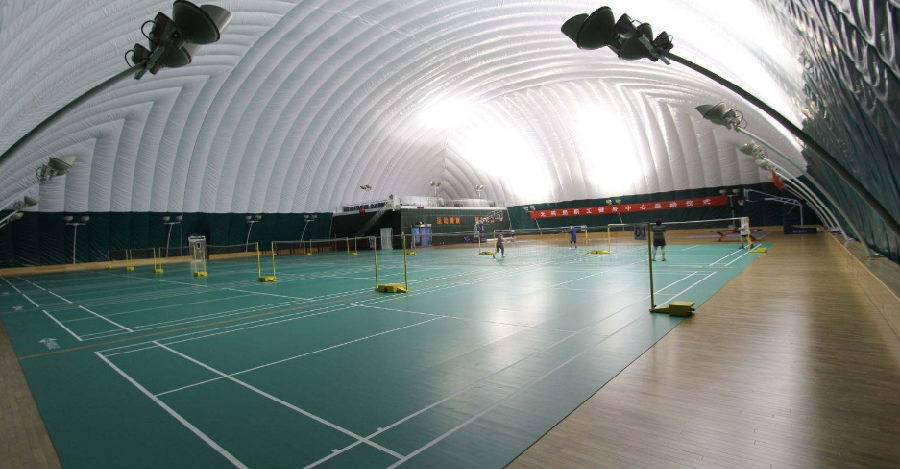Inflatable membrane structure gymnasium can be moved at any time. When the gymnasium is not in competition, it can be moved to schools or other places where it needs to be used
Low energy consumption
The PVDF film coated on the surface of the air film gymnasium has high thermal reflectance and heat dissipation rate, and low thermal conductivity, which greatly prevents solar energy from entering the room. In addition, the translucency of membrane material ensures the proper natural diffuse light illumination indoor, which is the best energy-saving and environmental protection material recommended by the domestic and foreign membrane construction industry. With the hollow insulation system, the membrane building is combined perfectly, the energy consumption is only 1 / 10-1 / 4 of the traditional building, and the total energy saving is more than 75%.

Low cost
Because there is no beam and column in the air membrane, a lot of material cost is saved, and the self weight of membrane material is also very light, which reduces the requirements and cost of civil engineering. Compared with traditional buildings, the cost is saved as much as 50-70%. And with the increase of building span, the construction cost per square meter shows a downward trend.
Easy to disassemble
Inflatable membrane structure gymnasium can be moved at any time. When the gymnasium is not in competition, it can be moved to schools or other places where it needs to be used. It can be reused, pollution-free, sustainable and recycled. Temporary or permanent buildings can be built according to the needs.
Large span
Due to the extremely light weight of membrane materials in the air film gymnasium, the weight per square meter is less than 3kg. The use of air pressure to support does not need internal beams and columns, so it can easily achieve a large span clear space of more than 100 meters, with a maximum span of 180 meters, which is impossible for traditional building structures.
The inflatable membrane sports hall has a certain sound insulation effect, and its sound insulation performance can be further improved through design optimization.
Winter is here, and everyone wants to find a warm and comfortable place to exercise, right? The membrane sports arena is definitely a good choice!
In today's society where environmental protection is increasingly becoming a focus of attention, which company is good for covering sewage tanks with anti lifting membranes? How to choose a trustworthy partner among the many companies that provide sewage tank anti lifting membrane covering services? The following points provided by the Zhanji editor may be helpful for your decision-making.
When we use exhaust gas treatment equipment, we often overlook the maintenance and upkeep of the equipment.
Shanghai Zhanji Fabric Structure Co., Ltd. is a professional membrane structure vendor who has an expert engineering design and construction team, and are at the leading position in this membrane field all over China.